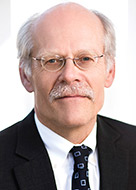Children are not small versions of adults and need special restraints
Gothenburg, June 30(Greenpost)– Lotta Jacobsson, child safety specialist in Volvo Cars stressed that children are not small version of adults and needs special restraints.
“The differences in anatomy between children and adults are considered in Volvo Cars’ child safety development – of inbuilt features as well as accessories. Children are not small versions of adults, which is why children need special restraints when travelling in cars,” said Jacobsson in a presentation in Gothenburg’s Volvo Design center.
She said a child’s neck is under development and not as strong as an adult’s neck. Also the head is proportionally bigger than that of an adult. Children therefore need special restraints, facing the rear for as long as possible until at least three-four years of age. When travelling facing the rear the crash forces are spread over the back and head, which reduces the load on the neck in frontal impacts.
” A child’s head weighs a lot more in proportion to the body, and the neck is weak. That is why we strongly believe that children should travel in rearward facing child restraints until they are three-four years old”, says Lotta Jakobsson, Child Safety Specialist at Volvo Cars.
Rearward facing child restraints are designed to support the neck and help spread the forces over a larger area in frontal impacts. Frontal impacts are the most frequent and usually the most severe impact situation.
– In a frontal impact a rearward facing child’s whole body is supported, which minimises relative movements between the head and torso, says Lotta Jakobsson.
Since more than 35 years, Volvo Cars is doing extensive research based on real life accidents. These studies show beyond doubt that the safest way for small children to travel in cars is facing the rear.
Physical evidence why children should travel facing the rear
The head of a newborn baby makes up half the total body weight, where an adult’s head weighs only about six percent of the total. This oversized head – in combination with not fully developed neck vertebrae, muscles and ligaments – makes the baby’s neck a weak point.
Forward facing in a frontal impact, the body is restrained by the safety belt while the head moves forward and puts load on the neck. Depending on crash severity and size of the child, this load can be injurious.
– In one severe frontal impact in central Europe two girls were sitting forward facing in the rear seat. The five-year-old sustained a broken leg and spent two weeks in hospital. Her little sister, just ten months old, died from neck injuries. This is a clear example that it is much too early for a ten month old child to travel forward facing, says Lotta Jakobsson.
When the child has outgrown its rearward facing seat
Rearward facing is the safest way for children to travel in cars until they have outgrown the seat and have reached an age of three-four years. Then the neck has become stronger and the child can be turned to face forward, using the standard safety belt in combination with a belt-positioning booster cushion. The booster cushion guides the lap belt across the pelvis, as low as possible towards the thighs and not over the soft belly. The torso belt runs diagonally across the chest. Pull the safety belt tight, as close to the body as possible. It does not affect the safety if the torso belt rests on the child’s neck, but if the safety belt is tucked under the arm or behind the back, the child is not as protected in an accident.
Volvo Cars’ policy is that children should use a booster cushion until they are 140 centimetres tall and ten years old. Booster cushions come in different models and sizes, with or without a backrest. Some cars can be equipped with an integrated booster cushion.
– An integrated booster cushion is always available and can not be accidentally left behind, says Lotta Jakobsson. It makes it easier to position the safety belt correctly and blends in with the car interior, which can make older children more interested in using a booster. It is important to fit the child restraint according to the manufacturer’s instructions. Most importantly, children must never be placed in the passenger seat if the airbag is active.
Myths and truths about travelling facing the rear
There are a number of myths that can stop parents from choosing the safer rearward facing child restraint for their children. Lotta Jakobsson at Volvo Cars Safety Centre responds to a few of them:
Myth: Children do not want to travel rearwards.
Truth: Small children are usually as happy facing any direction in the car.
Advice: If the child restraint is fitted in the back seat, place a mirror so that the child can see you. This will help the child feel safe and you can check on it easily with a glance in the interior mirror.
Myth: The child restraint will not fit.
Truth: All child restraints are not suitable for all cars.
Advice: Read up on child restraints to see which one would meet your needs. Also get a staff member to teach you how to fit it properly before purchase.
Myth: There are no rearward facing child restraints available.
Truth: It can still be difficult to find rearward facing child restraints on some markets. In the Nordic countries they are readily available, and more countries join in the recommendation that small children should travel facing the rear.
Advice: Check with your national road safety organisation. They should be able to give you further information or refer you to someone who can.
How children of different ages should travel in cars
A newborn baby should use an infant seat. Do not let it sit upright for too long, take frequent breaks and pick up the baby for a while or let it rest lying flat while the car is parked.
An infant or toddler should be fastened in a rearward facing infant seat or a larger rearward facing child restraint until the child has outgrown the larger seat and is three-four years old. The neck is weak and needs all the support it can get in the event of an accident. It does not matter if the child has to bend its legs or touches the back rest with its feet. Take breaks often to let the child stretch and play.
An older child who has outgrown the rearward facing seat but is shorter than 140 centimetres and has not reached the age of ten, should use a booster cushion. The booster gives the child an increased height and directs the safety belt over the stronger parts of the body during a crash. The lap belt should be placed tightly across the pelvis, as low as possible towards the thighs and not over the soft tissue of the abdomen. The torso belt should run across the chest and also be pulled tight. It does not matter if the belt touches the neck. Never place the torso belt under the arm or behind the back.
Do’s & Don’ts for children in cars – six simple rules that can save lives
Do
- Always make sure the child is properly restrained – during short trips as well.
- Choose a child restraint that is suitable for your child and car model.
- Remove bulky clothes so that the safety belt is tight and the child does not get too hot.
Don’t
- Never drive with an unrestrained child in the car.
- Never place a child in the passenger seat with the airbag active.
- Never fasten a child shorter than 140 centimetres with just the standard safety belt. It must be used in combination with a booster cushion and only by children who have outgrown their child seats.
Children in car crashes
– A heavy head and weak neck structure make small children extremely vulnerable in frontal impacts when facing forward.
– Head, abdomen, extremities, chest and spine injuries are the most common to children.
– Prevention is better than treatment. Use a child restraint that is recommended for your child’s age and use it properly.
– A rearward facing child seat provides firm support behind the child’s head and back.
– Older children should use a booster cushion to allow proper positioning of the safety belt.
Important
- Never fit a child restraint in the passenger seat with an active airbag.
- Remove bulky clothes so that the safety belt can be pulled tight as close to the body as possible.
- Remove or unzip warm clothing if necessary to prevent overheating and subsequent dehydration.

 Governor Stefan Ingves explains here what the decision to cut the repo rate to -0.25 per cent means for households and banks in practice.
Governor Stefan Ingves explains here what the decision to cut the repo rate to -0.25 per cent means for households and banks in practice.